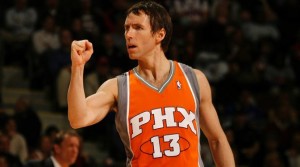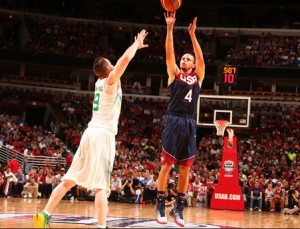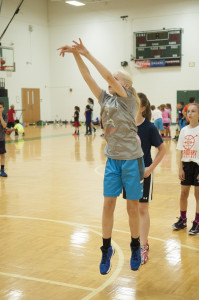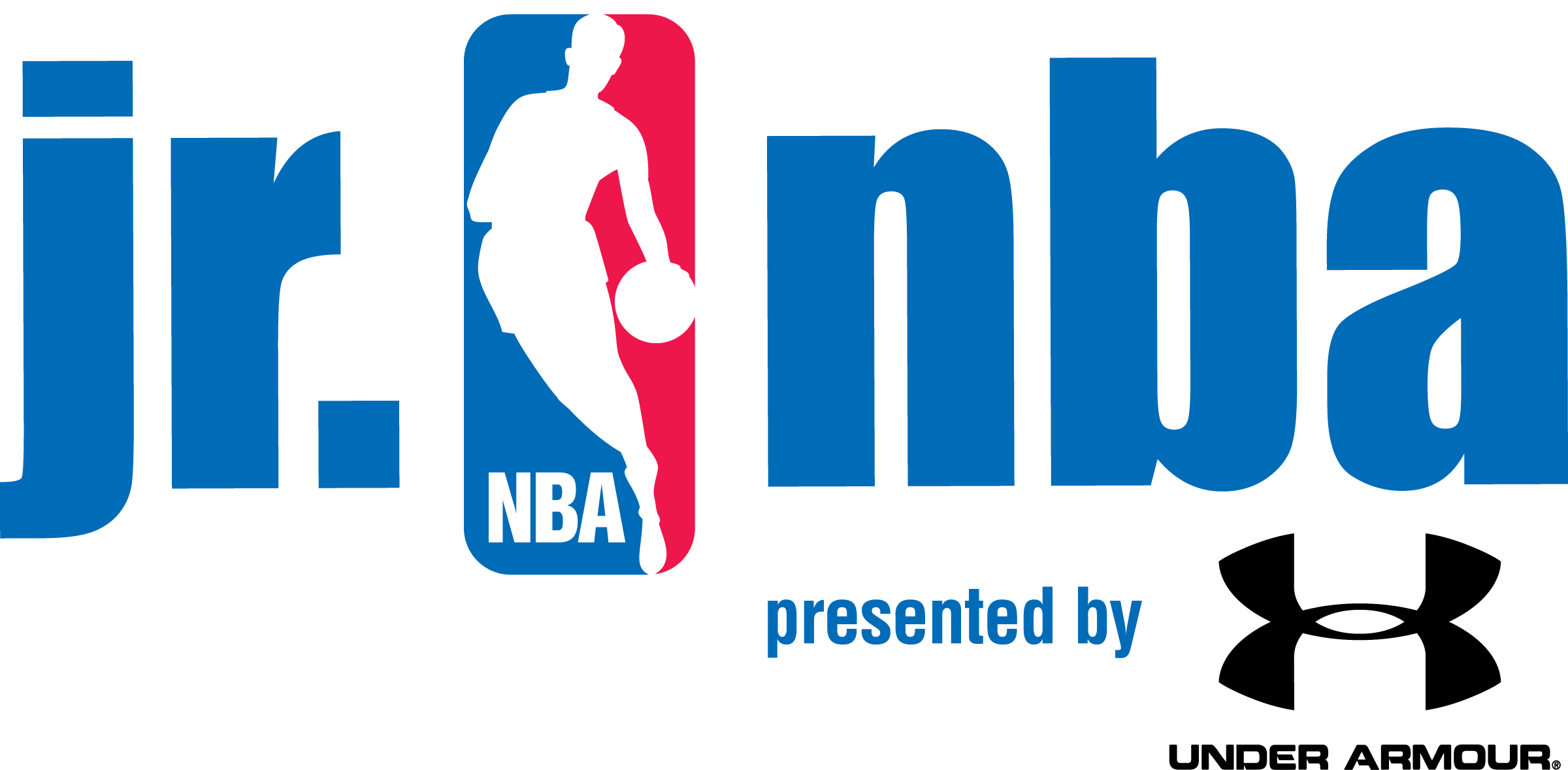
Basketball on the Edge – Steve Nash Shooting Workout – by Mike Procopio

Here’s a great post about the simplicity of Steve Nash’s shooting workouts when he was in the NBA with an accompanying video of the workout for you to watch.
Click here to read the article by Mike Procopio
Click here to register for one of our upcoming programs!
Sign up now to get a “Head Start” on your competition with our free basketball tip of the day delivered straight to your inbox. Click below, enter your email and we’ll also send you our E-Book, “Mental Toughness, Improve Your Brain – Improve Your Game”.
Basketball on the Edge – Good Shooting can be the Enemy of Great Shooting

Here’s a quote that I came across recently. It’s from Gray Cook (Gray Cook is practicing physical therapist and orthopedic certified specialist, and is also a certified strength and conditioning specialist and a kettlebell instructor. He is the founder of Functional Movement Systems, which promotes the concept of movement pattern screening and assessment. His work and ideas are at the forefront of fitness, conditioning, injury prevention and rehabilitation.)
It’s possible for an athlete to perform well even when poor form is used, but eventually the athlete will experience breakdown, inconsistency, fatigue, soreness and even injury. It should be the goal of the training program to create efficient movement in the activity. This will conserve energy, keep the athlete relaxed and allow the athlete to practice more and compete with less stress.
The problem is that poor form may be easier, more familiar and more comfortable and it may even seem to take less energy than proper form. Proper form, however, will take far less energy in the long run. Poor form, even if it leads to some initial success, will eventually rob the athlete and cost far more time and effort than what is required to fix the weak links. Poor form can incorporate less overall muscle activity and therefore seem easier, but don’t confuse this feeling with efficiency. Muscles are accustomed to generating the desired movement and maintaining optimal body position. To be efficient, the athlete must fulfill both criteria and then demonstrate the ability to reproduce the activity without a decline in quality. The athlete who understands this will be more efficient and will develop the muscles that were designed to perform the activity.
This led me to thinking about how we teach kids to shoot. Getting a player of any age to change the way they shoot can be one of the biggest challenges facing any coach (or parent).
Let’s look at some of the reasons why many kids develop poor shooting form to begin with and why the quote from Gray Cook is so applicable to this issue. Many kids first start to shoot the ball at a 10 foot basket. They are 5 years old, shooting at the same basket height as NBA players. In order to get the ball anywhere near the basket form must be sacrificed to achieve the desired result (the ball actually going in the basket!). The problem, of course, is those poor shooting mechanics stay with the player as they grow and develop. A shooting style with poor mechanics that worked at younger ages may not translate as a player moves through the levels of the game.
Once that poor shooting form is in place it becomes problematic to correct because fixing a player’s shooting mechanics requires one step back to move two steps forward. Players will experience a dip in immediate performance and that dip is often too difficult of an obstacle to overcome. It’s possible that a player with poor form IS having success at their current level of play. To convince them they should change is a challenge. It takes determination and grit to stay with a change in mechanics long enough for the new technique to replace the old. Not many young, casual players are willing to make the immediate sacrifice in exchange for improved long-term performance. However, what we need to keep in mind is that eventually the player will reach a level of play where the poor mechanics do not allow them to be effective and efficient as a shooter. If a player has dreams of playing the game at a high level (high school varsity basketball or above) then an investment of time and effort into improved shooting mechanics is critical to their success.
Being good at one level can often be the enemy of eventually being great. Although it may seem that a player can get away with having less than ideal form, in reality as Cook states, “but eventually the athlete will experience breakdown, inconsistency, fatigue, soreness and even injury.”
Here are 3 quick keys to improving your shooting mechanics.
1. Make a commitment to do what it takes to shoot the ball properly. Without a commitment to stick with it through the temporary dip in performance proper form will be difficult to achieve.
2. Making a change to your shot will take time, repetition, and an understanding that you will miss a lot of shots at first.
3. Start by shooting the ball at a wall or landing it on a line rather than shooting at the basket. The more reps the better! When you’re ready to shoot at the basket, stay close and use the proper form that you have started to develop when shooting at a wall. Thousands of shots will be needed to make the change stick, don’t get discouraged!
Leave us a comment about this post headstartbasketball@usa.net
Click here to register for one of our upcoming programs!
Sign up now to get a “Head Start” on your competition with our free basketball tip of the day delivered straight to your inbox. Click below, enter your email and we’ll also send you our E-Book, “Mental Toughness, Improve Your Brain – Improve Your Game”.
Basketball on the Edge – A Better Way To Get Up “Game Shots”

Game shots. It’s a term that all coaches, including myself, use all the time. When we are working players, we want them to take “game shots”. What do coaches typically mean when they say game shots?
- A full speed entry into the shot.
- A shot in the player’s shooting range.
- A shot that a player would realistically take in a game. (No spinning fadeaways)
- A shot where the player is focused and concentrates on making the shot.
If these elements are present then coaches are satisfied their players have worked on game shots.
Lately, I’ve been reading a lot of coaching articles detailing the one factor that drills focusing on “game shots” lacks. It is a key element to the success of any shot that is taken, and yet has nothing to do with shooting fundamentals. What is it?
Decision making. During an actual game when a player catches the ball they must first make a decision about what they are going to do with it. Should they pass? Should they drive? Should they shoot? Those are the three basic decisions, but as we know, the game is complex and dynamic. Who do I pass to? What type of pass is required? At what angle? Do I drive right or left? Do I have enough space to get to the rim or will I need to pull up? How far away from me is my defender? Can I get the shot off or do I need to head fake? Am I on balance? What’s the score of the game? How much time is left? These are just a few of the complex decision making progressions that players need to go through EVERY time they catch the ball. The decision to shoot involves much more processing than the average coach or player realizes.
Now, let’s consider the typical shooting drill. The player takes 10 shots in a row from the same spot or while executing the same movement. The player knows what to expect. There is no decision to be made. The drill requires them to shoot the same shot repeatedly. This type of drill is an example of block practice. I am not discounting the value of this type of shooting practice. As a player the vast majority of my shooting workouts were done this way. As a coach, many if not most of the drills I use with players are done this way. Repetition using the proper mechanics is required to become a great shooter. I believe this type of block practice can especially important for young players learning to shoot so they develop proper mechanics.
I have started to add more randomness and decision making to the shooting workouts that we do with our players. Let me give you two examples of drills that I’ve started using that require players to make a decision AND make a shot.
Drill # 1 – This is a team or group training shooting drill
- Put the players in two or three lines (depending on how many players you have) at half court.
- Put one defender in the key.
- Set up three cones in front of each line even with the top of the key.
- When the coach says “go” the first player in each line attacks the cone with their right hand and executes a crossover dribble.
- Once the players have crossed over, the defender picks one of the players to guard. That player goes one on one against the defender. The other two players shoot a jump shot off the dribble moving left.
- The shooters don’t know what’s going to happen until the defender decides who to guard. A decision is involved. The shooter’s brain must be active as they determine what the defender is going to do.
- The drill can be varied with different moves and or finishes for the players not being guarded.
Drill # 2 – This is an individual or small group drill
- Set up cones at 5 spots on the court within the players shooting range (top, wings, corners). Label the cones 1-5.
- The coach calls out a number and the player cuts out behind that cone to receive a pass from the coach.
- The coach then gives a hand signal that the player must recognize and act upon.
For example:
- A hand up means “Pass back to the coach”
- Right hand to the side means “One dribble jumper going left (opposite for the player who is facing the coach – (think of a mirror)”
- Left hand to the side means “One dribble jumper going right”
- No signal means “Take the jump shot”
- The drill attaches a decision to the shot. Although the read is simpler than complex game action it still forces the brain to “read” the hand signal and then execute a skill rather than always knowing the shot in advance.
- As a player’s skill level increases add a time limit and keep score. + 1 pt for a made shot, – 1 point for a misread decision. See for yourself what adding a pre-shot decision does to a player’s shooting percentage.
Every moment in a basketball game requires 3 things.
1. An ability to read the situation and understand what is happening.
2. An ability to use the information from the read to make a decision.
3. An ability to execute the chosen skill that will result in a positive outcome.
Helping players develop quick decision making skills is a challenge for any coach. A games-based approach to coaching (using mostly “live” drills that mimic game situations rather than repetitive drills) emphasizes the point that players learn best when they have to execute skills under game conditions. This means they must make decisions as part of the learning process. For example, it is not enough to know how to execute a crossover dribble, the player must also understand when and why they should execute that skill in the context of a game.
When we attach a decision to the skill it becomes harder to execute because the recall must be faster. When I know I’m going to shoot 10 three pointers in a row from the left wing I don’t have to recall how to execute that skill quickly, I already know that is what I have to do. In a game, I’m not sure what I am going to do when I catch the ball on the left wing. I have to READ, then DECIDE, then EXECUTE.
I’m anxious to explore this type of decision making training more. The process of quickly making decisions and acting on them is required for optimal performance in games. It makes sense to train this way during practice so we truly are replicating “game shots”.
Basketball on the Edge – Advice from an NBA Shooting Coach: Random vs. Blocked Shooting Practice by Chris Oliver

I stood at a golf driving range several years ago and had one of the most important moments of my coaching life. I was listening in on the lesson being given behind me. There was a middle aged woman, fairly new to the game, being instructed by an older gentleman. With every swing, she got new feedback on a different part of her swing. “On that swing you did this”, then she would take another swing trying to correct that mistake. “But on that swing you did this…”, and she would then change her focus to correcting THAT mistake. Every swing a new mistake that needed correcting. The coach, to an extent, was creating random practice in a block situation by not allowing her to focus on correcting one mistake before moving on to the next. I was getting anxious for her, and I wouldn’t have blamed her if she had suddenly screamed in frustration “shut up, shut up, shut up!!!”.
There is a great idea out there that coaches need to implement in their shooting practice, but they need to be careful how they are using the idea. The great idea is …
Click here to read the article by Chris Oliver
Leave us a comment about this post headstartbasketball@usa.net
Sign up now to get a “Head Start” on your competition with our free basketball tip of the day delivered straight to your inbox. Click below, enter your email and we’ll also send you our E-Book, “Mental Toughness, Improve Your Brain – Improve Your Game”.
Basketball on the Edge – Say Hello To My Little Friend: BRADs by Sefu Bernard

Not sure what a BRAD is? Neither was I until I read this article on shooting analytics by Sefu Bernard from thellab. There is more data out there than ever before when it comes to the proper way to shoot the basketball. After you read this article you’ll have a better understanding of the science behind the world’s greatest shooters and how that can help you make more shots! (And learn the secret of the BRAD!)
Click here to read the article by Sefu Bernard
Leave us a comment about this post headstartbasketball@usa.net


